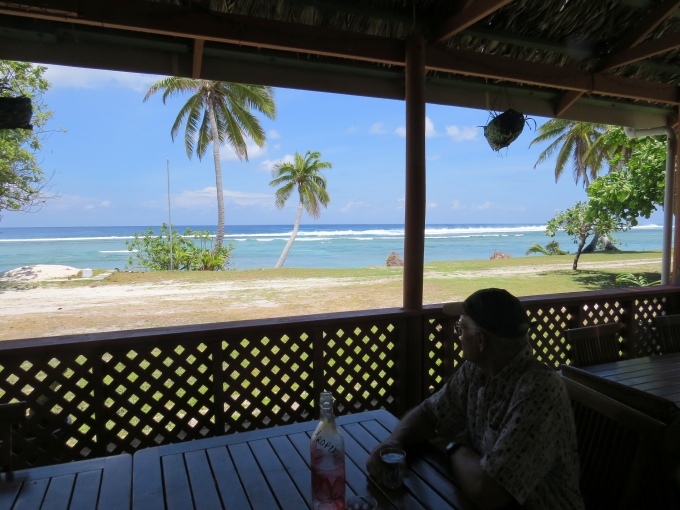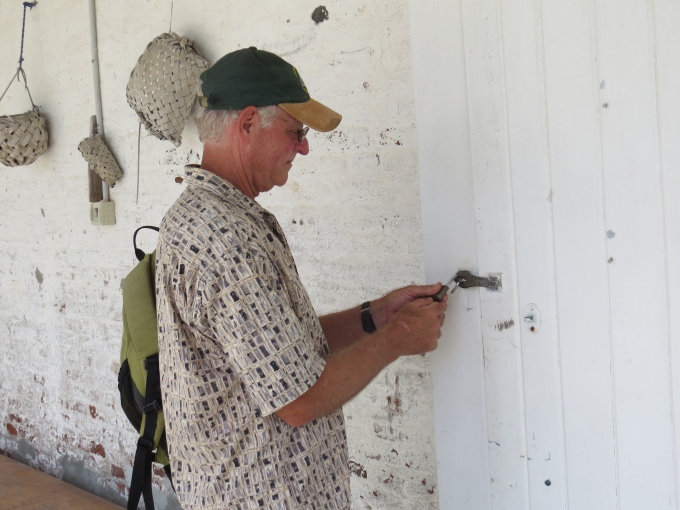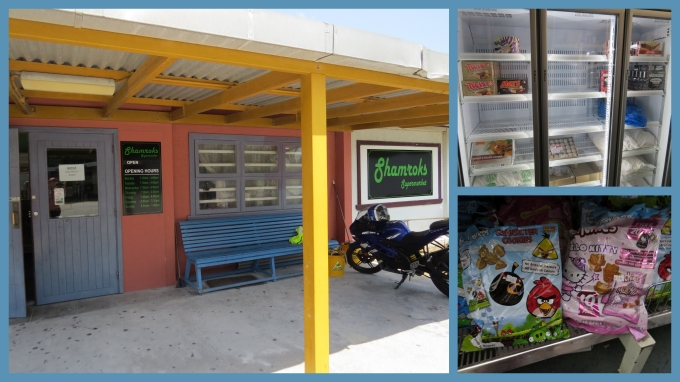Ferry to West Island and Back
/Cocos Keeling Islands – Indian Ocean
It's almost time to leave the Cocos and we still hadn't taken the ferry to the other side of the lagoon to visit West Island. It's the ex-pat Australian side of the atoll, the Admin Center, the larger supermarket AND the place we needed to visit to check out and get our clearance papers. We consulted the ferry schedule and there were no ferries from Direction Island until Thursday, so we dinghied over to Home Island, tied the dinghy securely to the long pier and planned to catch the ferry from there.
As it turned out the Federal Police were on Home Island for the day and we were able to check out there which was quite convenient. It was a quick, efficient, painless procedure to get our clearance papers for Rodrigues and our passports stamped. Plenty of time to still catch the 10:30 ferry to West Island. We met up with some German cruising friends and boarded the ferry for the 20 minute ride, bought our tickets for $2.50 each and enjoyed a very old Tom & Jerry cartoon en route.
I'm not sure what we expected West Island to be … the big smoke of the Cocos, I guess. We caught a mini-bus at the end of the jetty for a 7km ride into “town”. The supermarket took up a small portion of the Cocos Shop pre-fab facility … the other shops were closed. It didn't offer much more than the Shamrok market at Home Island. I bought a couple of onions, a cabbage and some apples … that was about it. We did see, however, “Bun Spice” which caught our attention. After a long passage, perhaps this might be considered an essential.
Though Wednesday was the big shopping day, nothing seemed open. We found the small Info Center and learned there were two places open for lunch … from 11:30 to 1pm only. We chose the more casual (and less expensive) Tropika which was a basic burger and chips kind of place with a lovely covered porch out back facing the ocean. The views were great. The food was mediocre, but David's “cheeseburger in Paradise” was just what the doctor ordered.
Other than a few souvenir items at the Info Center, there was nothing to buy. We indulged in a Magnum ice cream as we checked out the Cocos airport. The golf club is right next to the airport and evidently in order to play through all nine holes, the golfers must play across the runway.
After looking at a few more pretty views, we settled down to wait 1-1/2 hours for the return bus to the ferry dock. We'd seen pretty much all we could see that was open and available here. Most of West Island seems to be dedicated to tourism … motels, guest houses, car and sports equipment rentals, tours. Quite the disappointment. We had expected a bit more. Home Island with its resident Malay population offers more “village charm”. But, heck, you couldn't visit the Cocos without at least making a trip to West Island to make sure you weren't missing anything.
We watched the ferry arriving just as we got off the bus. We bought our tix and had an uneventful ride back to Home Island. The dinghy was just as we'd left it. We clambered down from the jetty and headed back to Cups. We had lots to do to get ready for our departure.





















